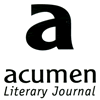Reviews
Sappho and her Myths
The Sappho Companion by Margaret Reynolds. Chatto and Windus. 422pp.; £25.00
This is two quite distinct books. The first, which occupies 41 pages, gives the major fragments of Sappho in Greek, plus a generous selection of English translations. The idea for this probably comes from Wharton’s fine late nineteenth century book (Henry Thornton Wharton, Sappho: Memoir, Text, Selected Renderings and a Literal Translation, 1885), which heavily influenced Pound and H.D. The second, which occupies over 300 pages, considers the influence of both the real Sappho and the myths that sprang from her down to the present, and adds a selection of the texts that took off from this.
The idea of section 1 is excellent, but it suffers badly in comparison with Wharton, who added the literal translations that Sappho’s far from easy dialect demands. Reynolds does not give the literal sense and since many, perhaps a majority, of the translations tend to be rather far away from the Greek, the chances of someone with (say) G.C.S.E. getting much out of it are remote. Similarly the text of the Greek is too raw for a book of this sort. Thus, in the second line of fragment 2, four words are printed without breaks, because that is how it appears in the text. This seems unnecessarily confusing. Equally it is good to have the Greek because, with all the difficulties, it is a wonderful passionate music, and it reminds us why Sappho is a great poet. This is just as well, because while there are genuinely distinguished exceptions (Williams and Housman among them) most of the translations tend to the flat. Thus (at an extreme) E. Burnaby Green in 1768:
Happy the youth, who free from care
Is seated by the lovely fair.
The conclusion I draw from reading this book is that if anyone wants to understand Sappho, it is almost worth learning Greek. This, and the fact that before twentieth century archaeology recovered some further fragments there was not that much to read, is perhaps why Sappho has attracted so much mythology. The less that is known about her, the more one can imagine. This feeling grows in the remaining three hundred or so pages of this book as Ms Reynolds dutifully details every imaginable influence of Sappho. I would be happy to know more about Sappho and nineteenth century France, or indeed about Swinburne, or perhaps even more H.D. and Pound, which strike me as vital matters, but by the time the author has fitted in the minor eighteenth century writers, not to mention the odd pulp novel, there is not the space. An enlarged, revised Wharton with some commentary added would have been much more use, but no doubt that would not appeal to the market.
Page(s) 118-119
magazine list
- Features

- zines

- 10th Muse
- 14
- Acumen
- Agenda
- Ambit
- Angel Exhaust
- ARTEMISpoetry

- Atlas
- Blithe Spirit
- Borderlines
- Brando's hat
- Brittle Star

- Candelabrum
- Cannon's Mouth, The
- Chroma
- Coffee House, The
- Dream Catcher
- Equinox
- Erbacce
- Fabric
- Fire
- Floating Bear, The
- French Literary Review, The
- Frogmore Papers, The
- Global Tapestry
- Grosseteste Review
- Homeless Diamonds
- Interpreter's House, The
- Iota
- Journal, The
- Lamport Court
- London Magazine, The
- Magma
- Matchbox
- Matter
- Modern Poetry in Translation
- Monkey Kettle
- Moodswing
- Neon Highway
- New Welsh Review
- North, The
- Oasis
- Obsessed with pipework
- Orbis
- Oxford Poetry
- Painted, spoken

- Paper, The
- Pen Pusher Magazine

- Poetry Cornwall
- Poetry London
- Poetry London (1951)
- Poetry Nation
- Poetry Review, The
- Poetry Salzburg Review
- Poetry Scotland
- Poetry Wales
- Private Tutor
- Purple Patch
- Quarto
- Rain Dog
- Reach Poetry
- Review, The
- Rialto, The
- Second Aeon
- Seventh Quarry, The
- Shearsman
- Smiths Knoll
- Smoke
- South
- Staple
- Strange Faeces
- Tabla Book of New Verse, The
- Thumbscrew
- Tolling Elves
- Ugly Tree, The
- Weyfarers
- Wolf, The

- Yellow Crane, The
